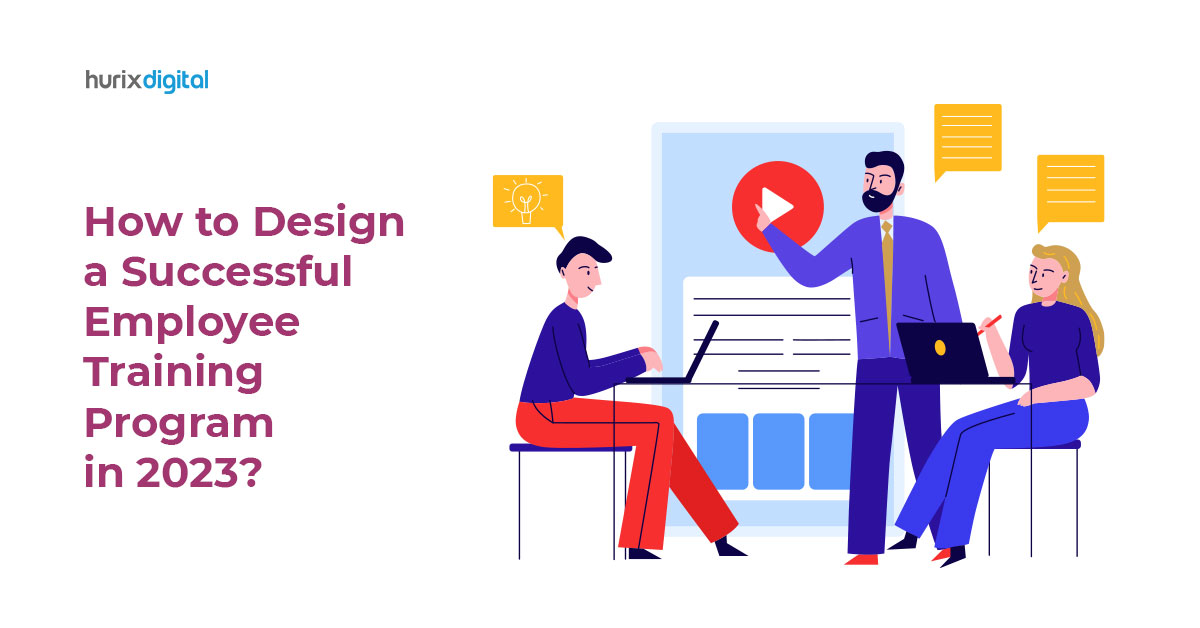How to Design a Successful Employee Training Program in 2023
In order to survive in the business world, marketers and business professionals are required to think fast, as if it’s a natural instinct.
Change is the only constant, and that’s what makes growth-oriented businesses quickly adapt to new trends. During the rise of the COVID-19 pandemic, most businesses hit rock bottom; only the ones that could bounce back quickly by adapting to the new normal survived.
Table of Contents:
- Objectives of Enterprise Training Programs
- How to Build an Effective Enterprise Training Program in 5 Steps
- Conclusion
According to a survey conducted by Gartner, 82% of companies allowed their employees to work from home during the pandemic. Moreover, the employees were trained to adapt to this new practice, and it improved the overall performance of such organizations to a huge extent.
The employees of today’s age prefer to work in places that help them grow in their careers – they are always in search of training opportunities to upskill themselves.
Keeping this in mind, most companies now include enterprise training to upskill their employees and move forward in the business world.
Forming an effective enterprise training program is not as complicated as it seems – by following just a couple of simple steps, you can design a highly successful training program for 2023. Consider this article your complete guide to crafting the perfect enterprise training strategy.
Objectives of Enterprise Training Programs:
- Skill Development: One of the primary objectives of enterprise training programs is to enhance the skills and competencies of employees. These programs focus on developing specific job-related skills, technical expertise, and soft skills such as communication, leadership, and problem-solving.
- Employee Performance Improvement: Training programs aim to improve employee performance by addressing knowledge gaps, providing job-specific training, and equipping employees with the necessary tools and resources to excel in their roles. The objective is to enhance productivity, efficiency, and overall job performance.
- Adaptation to Change: In a rapidly evolving business environment, organizations need to adapt to changes in technology, processes, or industry trends. Training programs help employees acquire new knowledge and adapt to these changes, ensuring they stay up-to-date and capable of effectively fulfilling their responsibilities.
- Employee Engagement and Retention: Effective training programs can contribute to higher levels of employee engagement and job satisfaction. By investing in employees’ growth and development, organizations can increase employee loyalty, motivation, and retention.
- Organizational Alignment: Training programs are often designed to align employees’ skills and knowledge with the organization’s strategic objectives. By providing training on specific processes, systems, or values, organizations can ensure that employees are working towards shared goals and operating in a consistent manner.
- Succession Planning: Training programs can be used to identify and groom potential leaders within the organization. By providing targeted training and development opportunities, organizations can build a talent pipeline and ensure a smooth transition in key roles.
- Compliance and Regulatory Requirements: In certain industries, training programs are necessary to meet legal and regulatory requirements. These programs aim to educate employees on industry-specific regulations, safety protocols, ethical practices, or data security measures.
How to Build an Effective Enterprise Training Program in 5 Steps
- Assess Training Needs: Begin by conducting a thorough assessment of the training needs within your organization. Identify the knowledge and skills gaps that exist among employees and determine the areas where training interventions are required. This can be done through surveys, performance evaluations, interviews, or by analyzing organizational data.
- Set Clear Objectives: Once you have identified the training needs, establish clear and specific objectives for your training program. Define what you aim to achieve through the program in terms of skill development, performance improvement, or other desired outcomes. These objectives will guide the design and implementation of the program.
- Design the Training Program: Based on the identified needs and objectives, design the structure and content of your training program. Determine the delivery methods that are most suitable for your organization, such as in-person workshops, e-learning modules, on-the-job training, or a combination of approaches. Develop relevant and engaging training materials, including presentations, manuals, videos, or interactive online courses.
- Implement the Training: Once the program is designed, it’s time to implement it effectively. Provide clear communication and instructions to employees about the training program, its purpose, and how they can participate. Schedule the training sessions or make the materials available through your chosen delivery channels. Ensure that trainers or facilitators are adequately prepared and equipped to deliver the training content.
- Evaluate and Improve: After the training program has been conducted, evaluate its effectiveness and gather feedback from participants. Use assessment tools, surveys, or feedback forms to assess the impact of the training on employee knowledge, skills, and performance. Collect insights on what worked well and areas that need improvement. Based on this feedback, make necessary adjustments and improvements to the training program for future iterations.
Conclusion
Learning is a never-ending process, and it’s time to give up thinking that educational institutions are the only place where one can learn.
Workplace trends are changing rapidly, and if an organization still makes the mistake of not keeping up with business trends and upskilling employees, failure will be inevitable.
While it’s true that the implementation of enterprise training programs is the part where things get complicated, Hurix Digital’s employee training solutions make the process of training employees a remarkable one.
With comprehensive, game-based learning solutions, complex topics are divided into bite-sized content so that learners can learn even on the go. Get in touch with Hurix Digital and craft the perfect employee training program for your organization today!









